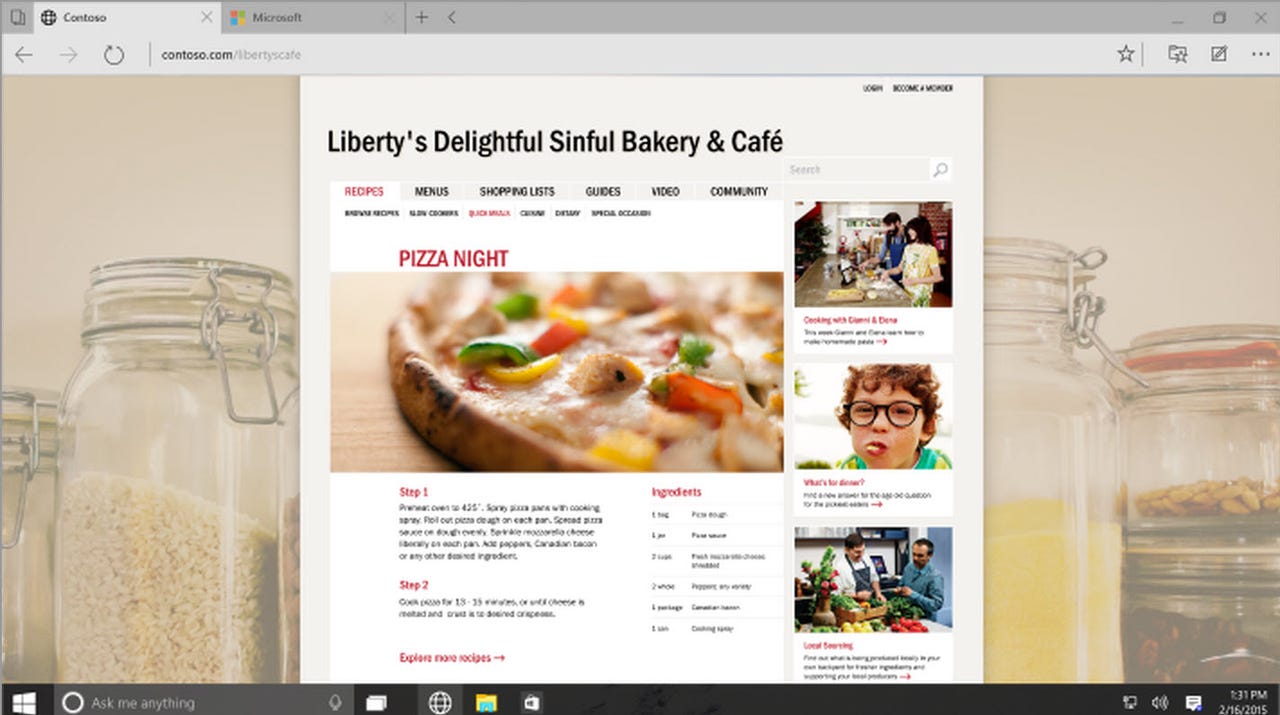Microsoft's Spartan browser: What's under the hood

Before Microsoft's January 21 Windows 10 reveal, a lot of information had leaked about Microsoft's new Windows 10 browser, codenamed "Spartan."

During yesterday's demonstration, Microsoft officials showed off how users will be able to annotate and share Web pages using Spartan, as leaks previously indicated would be the case. They also showed Spartan's built-in reading experience capabilities and the expected Cortana integration.
And, as previously leaked, Spartan will work on Windows Phones, tablets and PCs. In effect, Spartan is the replacement for "Modern" IE (the Metro-Style/Windows Store version of IE that shipped with Windows 8.)
On January 22, Microsoft officials went public with more about the internals of Spartan via a post to Microsoft's IE Blog. Microsoft is positioning Spartan as a brand-new browser -- something different from Internet Explorer.
Sources have said that Spartan will use the same rendering engine as IE. In Microsoft's blog post about Spartan, company officials say Spartan is "powered by a new rendering engine." That rendering engine is the same as the one in IE 11, which as far as I know, is an updated version of Microsoft's Trident. (It's definitely not WebKit, Blink or Gecko.)
Here's how Microsoft explains this in the blog post:
"Powered by a new rendering engine, Spartan is designed for interoperability with the modern web. We've deliberately moved away from the versioned document modes historically used in Internet Explorer, and now use the same markup as other modern browsers. Spartan's new rendering engine is designed to work with the way the web is written today."
That paragraph points to this blog post from last year by the IE team. That blog post never uses the word "Trident," but instead says IE will be rendering public Internet sites with a new "Edge mode platform," which introduces a new interoperable UA string, which ignores X-UA-Compatible.
Today's blog post notes that Spartan "loads the IE11 engine for legacy enterprise sites when needed, while using the new rendering engine for modern web sites."
Microsoft's guidance for Web developers regarding Windows 10 and its browser strategy:
1. Our new rendering engine will be the default engine for Windows 10, Spartan, and Internet Explorer. This engine has interoperability at its core and consumes the same markup you send other modern browsers. Our standards support and roadmap can be found at http://status.modern.ie.
2. Public Internet web sites will be rendered using the new engine and modern standards, and legacy Internet Explorer behaviors including document modes are not supported in the new engine. If your web sites depends on legacy Internet Explorer behaviors we encourage you to update to modern standards.
3. Our goal is interoperability with the modern web and we need your help! You can test the new engine today via the Windows Insider Program or using http://status.modern.ie.2. Please let us know (via Connect or Twitter) when you find interoperability problems so we can work with the W3C and other browser manufacturers to ensure great interoperability.
Today's IE Blog post also confirms what my sources told me in late December: Internet Explorer is not going away. IE will still be available on Windows 10, using the same dual rendeering engine as Spartan. The inclusion of IE alongside Spartan is a nod to enterprise customers who have legacy sites that use older technologies designed only for IE, such as ActiveX controls and Browser Helper Objects.
More Windows 10
There is no explanation in today's blog post as to which versions of Windows 10 will include the ability to run IE. I'd assume it is only those which include a desktop, so not the Windows 10 mobile variants that run on Windows Phones and under eight-inch tablets. There's also no mention as to whether users who want IE on Windows 10 will have to download it or whether it will be preloaded with certain Windows 10 SKUs.
There is also no mention in today's post about how and whether Spartan will support browser extensions like Google Chrome does. Sources have said this will be the case. And as Neowin and the FraWin.com sites both have reported, some believe that Spartan will be able to run Chrome extensions in some way. My sources have said Chrome extension compatibility also is a goal and aspiration for Microsoft.
Update: The "new" rendering engine is a fork of Trident, Microsoft officials are confirming. Here's their full statement, via a spokesperson:
"The Spartan rendering engine (edgehtml.dll) is a new component and separate from Trident (mshtml.dll). The new engine began as a fork of Trident, but has since diverged rapidly over the past many months, similar to how several other browser engines have started as forks prior to diverging. The new rendering engine is also being built with a very different set of principles than Trident - for example: a focus on interoperability and the removal of document modes."